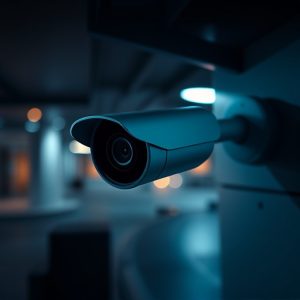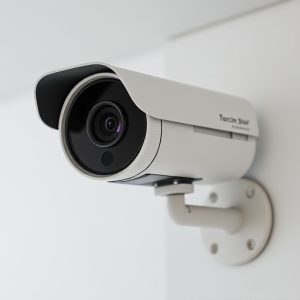Hidden Camera with Built-In DVR Systems: A Practical Guide to Installation, Features, and Best Use
A hidden camera system with a built-in Digital Video Recorder (DVR) offers covert surveillance capa…….
A hidden camera system with a built-in Digital Video Recorder (DVR) offers covert surveillance capabilities, seamlessly integrating into everyday objects to remain unnoticed while capturing high-quality footage. The DVR is the core component, handling recording and storage with features like motion-activated capture for efficiency, remote access via the internet, and expandable storage options such as SD cards or cloud integration. When selecting a system, prioritize cameras with at least 720p HD resolution, night vision, and sufficient channel capacity to match your camera count. Storage considerations are crucial; ensure there's enough memory for storing footage without overwriting, and consider remote access and cloud storage options for added flexibility. Installation involves careful placement for optimal coverage and privacy, secure mounting, proper connection to the DVR, and fine-tuning settings for clarity and efficiency. Regular maintenance and backups are key to maintaining the system's effectiveness as a security solution, ensuring that the hidden camera with built-in DVR functions as an indispensable tool for discreet surveillance.
Hidden camera with built-in DVR systems have become increasingly indispensable tools for security, surveillance, and personal safety. This article delves into the intricacies of these covert devices, offering a comprehensive guide to understanding their functions and benefits. From key features that enhance their effectiveness to the advanced technology that powers them, we’ll cover it all. Additionally, we provide a step-by-step installation guide tailored for user-friendly setup, ensuring your hidden camera with built-in DVR is operational in no time. Furthermore, learn how to maximize these systems’ potential through effective use and storage management to safeguard your interests efficiently.
Understanding Hidden Camera with Built-In DVR Systems: A Comprehensive Guide
When considering a hidden camera system with a built-in Digital Video Recorder (DVR), it’s crucial to understand both components for effective surveillance. These devices are designed to remain inconspicuous, capturing footage without drawing attention, which is ideal for sensitive environments or discreet monitoring needs. The cameras themselves can be integrated into everyday objects like clocks, smoke detectors, or even picture frames, blending seamlessly into their surroundings. This integration not only ensures the camera’s safety from tampering but also maintains the aesthetic integrity of the installation location.
The DVR unit is the core recording and storage component of the system. It records high-quality video footage directly from the hidden cameras, often with motion-activated settings to conserve space and extend battery life if the camera is wireless. The built-in DVR typically features a user-friendly interface, allowing users to review, save, and even stream footage remotely through an internet connection. This advanced functionality enables users to monitor live feeds or access recorded clips from a smartphone, tablet, or computer, providing security and peace of mind. Additionally, many systems come equipped with SD card slots or cloud storage options for expanded capacity, ensuring that important footage is not lost and can be retrieved as needed. Understanding these features and capabilities is essential for selecting the right hidden camera with a built-in DVR system to meet your specific surveillance requirements.
Key Features to Consider When Selecting a Hidden Camera with Built-In DVR
When selecting a hidden camera with a built-in DVR, it’s crucial to consider several key features that will determine the system’s effectiveness and usability. High-resolution recording ensures clear visuals for identifying details or events. Look for cameras that offer at least 720p HD video quality, as this resolution can capture finer details compared to lower resolutions. Additionally, night vision capability is a vital feature for monitoring areas in low-light conditions, ensuring surveillance remains active even when it’s dark. The number of channels the DVR supports dictates how many cameras you can connect simultaneously; hence, choose a system with an appropriate channel count based on your monitoring needs. For instance, a single-channel system is suitable for one camera, while multi-channel systems allow for expansions as your surveillance requirements grow.
Storage capacity and types are also significant considerations. A built-in DVR with ample internal memory or support for external storage like SD cards or hard drives will provide enough space to record events without overwriting old footage. Some hidden camera DVR systems come with motion-activated recording features, which help in saving storage space by only recording when movement is detected. This not only conserves memory but also focuses on capturing significant events rather than hours of idle time. Furthermore, ensuring the system has a user-friendly interface for easy navigation and playback of recorded footage is important for convenient review and potential evidence retrieval. Advanced models may offer remote access via smartphone apps or cloud storage integration, which can be invaluable for monitoring your premises from afar.
The Technology Behind Hidden Camera DVR Systems: How They Work
Hidden camera systems with built-in DVRs represent a sophisticated blend of surveillance technology and digital recording, providing users with a discreet way to monitor and record activities within a specified area. These systems typically consist of a miniature camera, often no larger than a common household item, paired with a compact digital video recorder that stores the footage internally or on external storage devices. The cameras are designed to be unobtrusive, blending seamlessly into their environment, which could range from a bookshelf to an alarm clock.
The integration of the camera and DVR in these systems allows for real-time monitoring and post-event review. High-quality video footage is captured and stored upon activation or through motion detection sensors. The DVR component is equipped with advanced features such as high-definition resolution, night vision capabilities, and in some cases, two-way audio functionality to enable communication from a remote location. The digital recordings can be accessed via a computer or compatible smart device, where the footage can be reviewed, saved, or uploaded to cloud storage for security purposes. This technology ensures that users have a reliable and effective tool for surveillance, allowing them to keep watch over their valued spaces with a hidden camera with built-in DVR.
Installation and Setup of Your Hidden Camera with Built-In DVR: Step-by-Step Guide
When installing a hidden camera with a built-in DVR, careful planning and precise execution are key to ensuring that your surveillance system operates discreetly yet effectively. Begin by selecting the optimal location for your camera, considering factors such as field of view, privacy laws, and potential obstructions. Ensure that the camera is positioned to capture the desired area without being noticeable to those you are monitoring. Once the location is chosen, affix the camera securely to prevent it from being tampered with or knocked over.
Next, connect the camera to the DVR unit following the manufacturer’s instructions. Most systems come with a power supply and cables necessary for this process. Power on the DVR and allow it to initialize. Configure the camera settings through the DVR interface, adjusting resolution, frame rate, and other preferences as needed. Set up the recording schedule, deciding whether you want continuous recording or motion-activated capture to conserve storage space. After configuration, it’s essential to run a test to ensure that the camera is recording clearly and that the audio, if available, is also being captured properly. Verify that the footage is being saved onto the DVR’s memory card or hard drive as intended. Finally, hide any wires neatly to maintain the camera’s concealed nature. By following these steps meticulously, you can install a hidden camera with built-in DVR that provides reliable surveillance without drawing attention to its presence. Remember to periodically check the system for functionality and storage space to ensure continuous monitoring capabilities.
Maximizing the Potential of Your Hidden Camera with Built-In DVR: Tips for Optimal Use and Storage Management
Utilizing a hidden camera with a built-in DVR can provide valuable security footage and peace of mind for homeowners and businesses alike. To maximize the potential of your hidden camera system, it’s crucial to understand how to optimize both its recording capabilities and storage management. Firstly, ensure that the camera is installed in a conspicuous location to deter any attempts at tampering. Positioning the camera with a clear view of the area you wish to monitor will enhance the quality of your footage. Additionally, adjust the camera’s settings to record high-resolution videos, as this will improve image clarity and detail, which can be critical for identifying individuals or incidents.
When it comes to storage management, consider the capacity of your DVR and the frequency of events you wish to capture. Regularly check your storage space to avoid reaching full capacity unexpectedly. Many systems offer options for continuous recording, motion-activated recording, or scheduled recordings. Selecting a mode that suits your needs can help prevent data loss and ensure that critical footage is not overwritten. Moreover, regularly backing up your footage onto an external hard drive or cloud storage can safeguard against potential DVR failure or theft. By carefully managing your system’s settings and storage options, you can effectively leverage the capabilities of your hidden camera with a built-in DVR to create a robust security solution.


